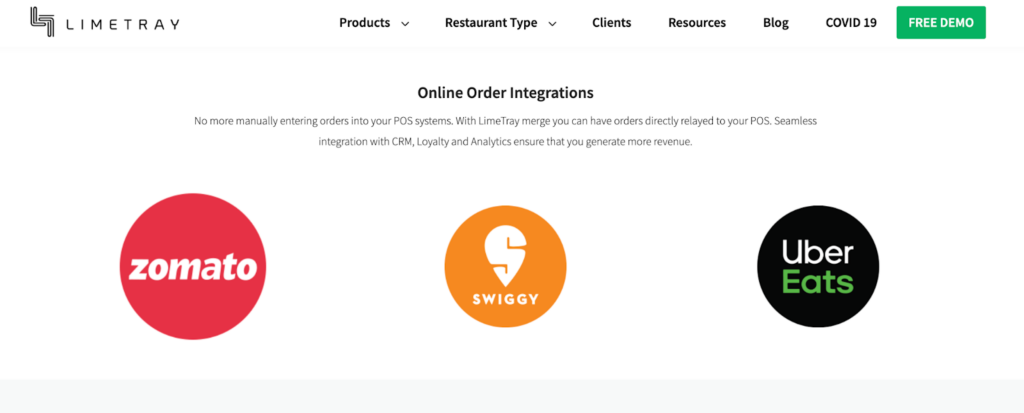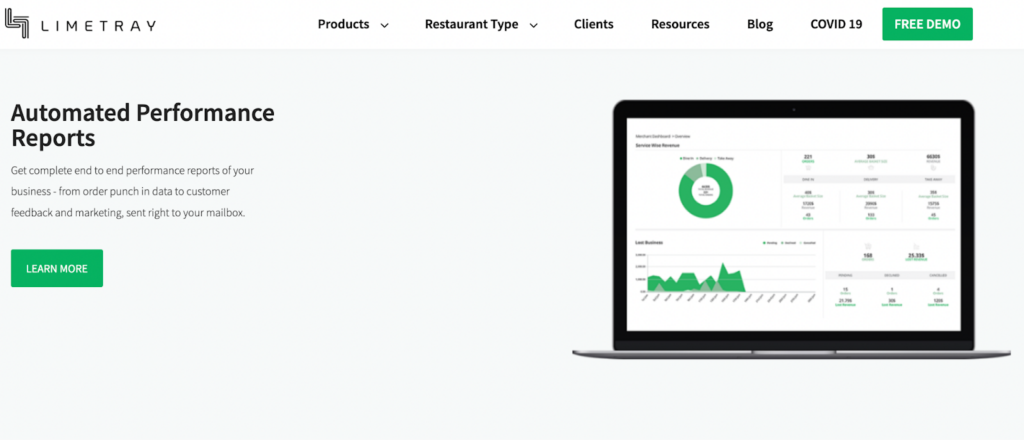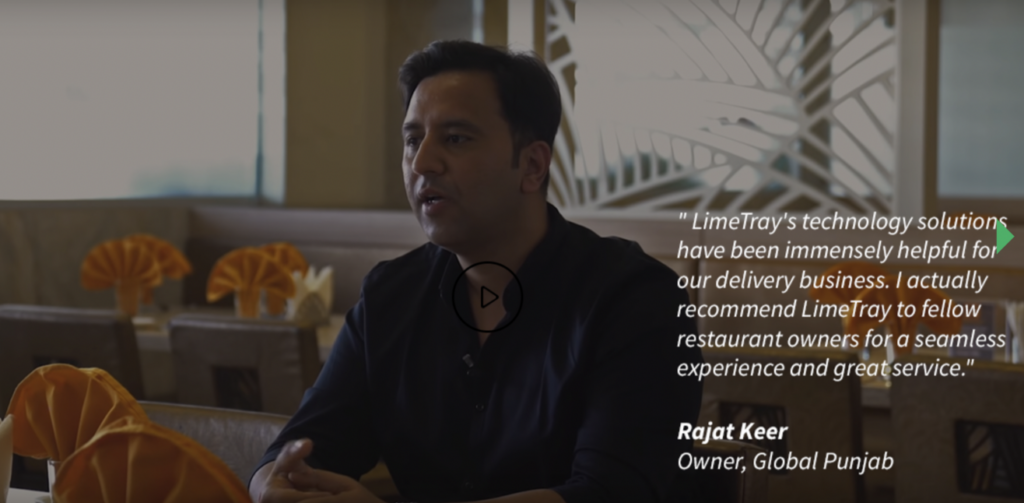We’ve all been there—walking into a restaurant, waiting to be seated, and glancing around while we wait. If you’re a regular, you probably know the drill. But how many of you have noticed the old-school cash registers sitting behind the counter?
Yes, it’s 2024, and there are still places operating on legacy POS systems from the early 2010s. How is that even possible?
According to a survey on POS payments, cash and mobile devices are now the top two payment methods preferred by Indian consumers. Given this, using something that is not mobile and does not meet modern tech standards is like running a marathon in flip-flops.
But here’s the good news: things have changed. The restaurant POS systems we have today are super advanced.
The article below explores key features of restaurant POS systems, comparing top options like ere4u and LimeTray, along with their pricing factors.
Top 10 Restaurant POS Systems and Their Features
With so many restaurant POS options on the market, finding the perfect POS solution for your restaurant can feel overwhelming. Here’s a list of the top restaurant POS systems, each offering unique features to meet diverse business needs.
| Restaurant POS System | Key Features |
| LimeTray POS | Comprehensive analytics, customizable menu, loyalty program, delivery management |
| eRe4u POS | Admin dashboard, unlimited training & support, table management, works on cloud and offline |
| Square | Easy setup, customizable menus, integrated payments |
| Toast POS | Cloud-based, inventory management, customer insights, employee management |
| TouchBistro | User-friendly iPad-based, tableside ordering, inventory management, built-in CRM |
| Revel Systems | Hybrid cloud-based, multi-location support, loyalty programs, customizable reporting |
| SkyTab | Durable and reliable POS hardware options,commission-free online ordering system,QR code technology |
| Lightspeed | Cloud-based, advanced reporting integrates with delivery apps, inventory tracking |
| Lavu POS | Customizable, offline functionality, mobile ordering, employee time tracking |
| Clover POS | User-friendly interface, customizable hardware, supports gift cards, secure payments |
15 Key Features of Restaurant POS Systems
Picking the right POS system for your restaurant can be like shopping for a phone—sleek, reliable, and packed with features that work for your business. So, what makes a restaurant POS system stand out?
Here are 15 key features that could take your restaurant’s operations from chaotic to smooth sailing.
- Order Management
Picture a busy night at your restaurant, with servers running around and orders flying in—it’s easy for things to get lost in the shuffle.
With a solid restaurant POS system, orders are entered accurately, and special requests are clearly communicated to the kitchen.
With our online food ordering system, orders are sent directly to kitchen displays, speeding up the process and reducing errors. This means fewer mistakes, quicker service, and happier customers. Everyone wins.
- Table Management
We’ve all seen it: customers waiting to be seated, the hostess scrambling to figure out where to put them, and suddenly, there’s a bottleneck. A sound restaurant POS system will take the chaos out of table management.
With instant updates on table availability and reservations, your staff can seat customers more efficiently. Plus, you’ll never double-book a table again. This kind of system makes sure your restaurant runs like clockwork, even during those crazy rush hours.
- Inventory Tracking
Nothing’s worse than telling a customer you’re out of their favorite dish or drink because you didn’t catch that you were low on stock. That’s where inventory tracking comes in.
An innovative restaurant POS system tracks your stock at all times, sends reorder alerts when supplies are running low, and even helps you avoid over-ordering.
But with our inventory system, your inventory is always in check, so your kitchen runs smoothly, and customers aren’t disappointed by items that aren’t available.
No more scrambling at the last minute to replace ingredients—it’s all handled automatically. Discover how this can help your business—read here!

- Employee Scheduling and Time Tracking
Scheduling employees can be a real headache—especially when it’s last-minute, someone’s sick, or you’re understaffed during the dinner rush.
A restaurant POS system handles employee scheduling and time tracking, giving you a clear view of work hours and performance metrics all on one platform.
With this data, you can make smarter staffing decisions and avoid over-scheduling or under-scheduling employees. Plus, it keeps your staff happy because they know their schedules are fair and balanced.
- Customer Relationship Management (CRM)
You know the feeling when you walk into a place and they remember your name, your favorite dish, or how you like your coffee? A restaurant POS software with CRM capabilities can help you do just that.
By tracking customer preferences, orders, and past visits, you can offer personalized experiences and promotions.
And with LimeTray’s CRM tools, you can easily send out targeted promotions, increasing customer loyalty and boosting repeat business. See the difference for yourself—read here!
- Kitchen Display System (KDS)
Picture a busy Saturday night; orders are piling up, the printer jams, and suddenly, the order for a table of 6 is lost. This issue can be resolved with a Kitchen Display System (KDS).
Instead of printing tickets, orders are displayed digitally, so the kitchen staff can see them at any time. This cuts down on confusion, speeds up order fulfillment, and improves communication between front-of-house and back-of-house staff.
- Multi-Location Support
For multi-location food chains, a POS system centralizes inventory, sales, and customer data, ensuring consistency across outlets. This approach simplifies trend analysis and inventory management and supports faster operations, helping plan for growth.
- Multiple Payment Options
Restaurant POS systems that support multiple payment types create a faster and more flexible checkout experience.
To improve customer convenience and ensure secure transactions, LimeTray restaurant POS supports contactless payments via Razorpay, Paytm, MobiKwik, PayPal, 2C2P, Stripe, and PinPay.
- Mobile POS Capabilities
Mobile restaurant POS capabilities enable servers to take orders directly from the dining area using tablets or handheld devices. This increases efficiency by allowing orders to be placed without servers needing to return to a fixed terminal.
Mobile POS systems enhance customer service by letting servers take orders, suggest items, and process payments at the table, reducing wait times and speeding up service.
- Customer Feedback Collection
When customers leave feedback, positive or negative, it’s a goldmine of information. A restaurant POS system that includes customer feedback tools lets you gather insights directly from your diners.
You can send out surveys, ask for ratings, and track customer satisfaction. This data helps improve your service, menu, and customer experience, creating a continuous feedback loop that allows your restaurant to evolve and meet customer expectations.
- Delivery Integration
Integrating third-party delivery services directly into the restaurant POS system centralizes order management and ensures consistent service quality.
With delivery integration, restaurants can manage multiple delivery channels from one platform, reducing the risk of errors in delivery orders.
In line with this, LimeTray’s POS system integrates with popular delivery services like Swiggy, Uber Eats, and Zomato.
This facilitates order processing and delivery coordination, as shown in the image below.

- Menu Management
Menu management tools allow restaurants to create menus quickly, add or remove items as needed, add modifiers, and create combos with a few taps. This flexibility helps restaurants adapt to seasonal ingredients, new menu items, or limited-time offers.
Menu management features allow quick adjustments, keeping offerings fresh and relevant, catering to evolving customer preferences, and potentially increasing sales.
- Data Analytics and Reporting
Sometimes, as a restaurant owner or manager, you just need to know what’s working and what’s not. Is the menu item you’re pushing actually selling, or is it a flop?
A restaurant POS system monitors sales, inventory, and employee performance, providing instant access to detailed reports and data.
This enables you to make informed decisions on the fly, such as adjusting your menu, changing prices, or maximizing staffing levels.
To make this even more effective, LimeTray’s analytics tool automates reporting.
This gives restaurant owners detailed insights into sales, customer trends, and marketing impact, as shown in the snapshot below.

These insights help restaurant owners make informed business decisions, optimize staffing, and adjust menus based on performance data.
- Security Features
Restaurant POS systems with advanced security features safeguard customer data and reduce fraud risks through secure logins, encrypted payments, and role-based access.
These security measures give restaurant owners peace of mind and protect their reputation by preventing unauthorized access and ensuring compliance with regulations.
- Offline Mode
An offline mode ensures that essential restaurant POS tools continue operating during network outages. By allowing transactions and order entry to continue without internet connectivity, offline mode keeps operations smooth even in high-demand situations.
This feature is invaluable for busy restaurants. It minimizes disruptions, allowing staff to focus on serving customers rather than troubleshooting network issues.
Now that we’ve covered the essential features of restaurant POS systems, let’s look into the factors that influence their pricing.
10 Factors Influencing Restaurant POS System Pricing
The cost of a restaurant POS system can vary significantly based on features, scalability, and more. Here are ten key factors that influence POS system pricing.
- Hardware Requirements
Restaurant POS systems require various hardware components, such as tablets, touchscreens, printers, and cash drawers. The type and quality of hardware can increase costs, especially if multiple terminals are needed.
- Software Features and Customization
Restaurant POS software with advanced features such as inventory tracking, table management, CRM, and analytics tends to be more expensive. Customization options tailored to specific restaurant needs also add to the price.
- Cloud-Based and On-Premises Solutions
Cloud-based restaurant POS systems generally operate on a subscription model, which can lower upfront costs but involve ongoing fees.
In contrast, on-premises systems often have a one-time license fee but may require more initial investment in hardware and infrastructure.
- Number of Licenses and Users
Restaurant POS providers often charge based on the number of user licenses. Large restaurants or chains may require more licenses to support additional staff, increasing overall system costs.
- Integrations with Other Systems
Integrations with other software, such as accounting tools, delivery platforms, and loyalty programs, add functionality but can raise prices. Some restaurant POS providers charge extra for third-party integrations or offer them only in premium plans.
See how Global Punjab boosted their delivery business with LimeTray’s cutting-edge delivery technology, expediting operations and ensuring faster, more reliable service for their customers. Watch their full success story here!

- Installation and Setup Costs
Some restaurant POS systems involve complex setup processes, especially if they require network and hardware configurations. Providers may charge setup fees to ensure smooth installation and avoid downtime.
- Training and Support Services
Quality customer support and comprehensive employee training are essential, particularly for new or complex systems. Some providers include basic support in the subscription, but dedicated, round-the-clock support can increase monthly costs.
- Security and Compliance Features
Restaurant POS systems offering enhanced security features, such as PCI compliance, encrypted transactions, and fraud protection, typically have a premium plan. These features help protect sensitive customer and business data but add to the overall expense.
- Add-On Modules and Customizable Options
Certain restaurant POS solutions offer optional add-ons for specialized features like advanced reporting, multi-location support, or mobile POS terminals. These modules cater to specific needs but can increase subscription costs or upfront fees.
- Contract Length and Payment Plans
Many providers offer pricing incentives based on contract length. Opting for an annual plan instead of a month-to-month subscription often provides discounts but requires a longer commitment.
Each of these factors influences the final pricing of a restaurant POS system. Understanding these variables helps restaurant owners make informed decisions that balance functionality with budget.
Conclusion
Investing in the right POS system for your restaurant is no small decision. It is about finding a system that keeps things running smoothly, improves customer service, increases efficiency, and enables you to make better business decisions.
If you’re ready to level up your operations, the right POS system is waiting to make it happen.
So, start your journey to transforming your restaurant’s potential with LimeTray’s all-in-one POS system, trusted by brands like Jollibee Brunei, Filli Cafe, and Sagar Ratna.
This system simplifies order management and provides deep analytics to help you make data-driven decisions.



